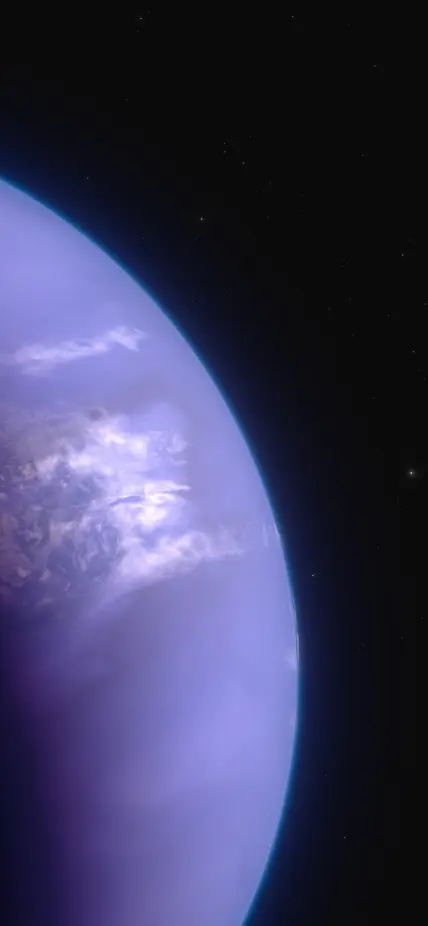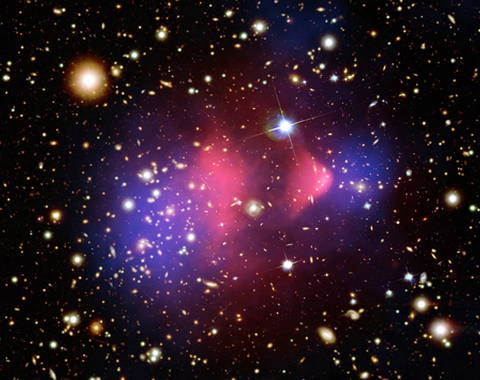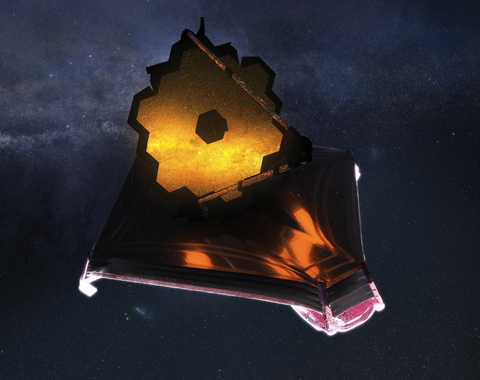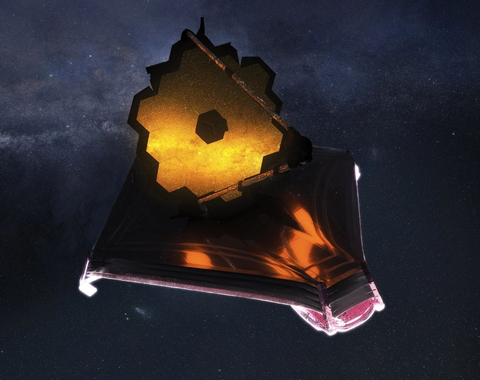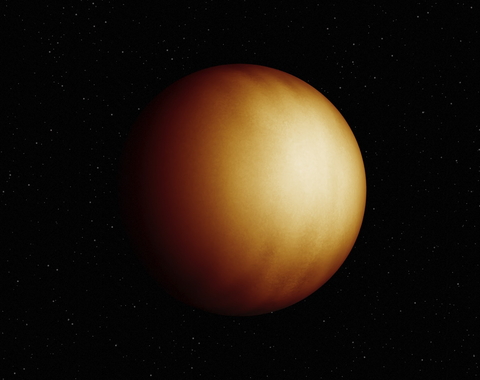Washington, D.C.—An international team of researchers, including recent postdoctoral alumna Anjali Piette—who played a key role in the research—as well as Staff Scientist Peter Gao, used JWST to map the weather on the hot gas-giant exoplanet WASP-43 b. Their findings are published in Nature Astronomy.
“This planet is what’s called a hot Jupiter, because it orbits so close to its host star—less than a quarter of the distance between Mercury and the Sun—that it is significantly hotter than any of the gas giants in our own Solar System,” Piette explained. “Astronomers are interested in understanding how these planets formed or migrated to such close-in positions, as well as how the atmospheres of these planets are shaped by their host stars.”
With such a tight orbit, WASP-43 b is tidally locked, meaning one side is continuously illuminated and the other is in permanent darkness. Although the nightside never receives any direct radiation from the star, strong eastward winds transport heat around from the dayside.
Since its discovery in 2011, WASP-43 b has been observed with numerous telescopes, including NASA’s Hubble and now-retired Spitzer space telescopes. The research team’s JWST observations, combined with 3D climate models and previous work with other telescopes, suggest the presence of thick, high clouds covering WASP-43 b’s nightside, clear skies on its dayside, and equatorial winds upwards of 5,000 miles per hour mixing atmospheric gases around the planet.
“With Hubble, we could clearly see that there is water vapor on the dayside. Both Hubble and Spitzer suggested there might be clouds on the nightside,” explained lead author Taylor Bell of the Bay Area Environmental Research Institute. “But we needed more precise measurements from Webb to really begin mapping the temperature, cloud cover, winds, and more detailed atmospheric composition all the way around the planet.”
Although WASP-43 b is too small, dim, and close to its star for a telescope to see on its own, its short orbital period of just 19.5 hours makes it ideal for a technique called phase curve spectroscopy, which involves measuring tiny changes in brightness of the star-planet system as the planet orbits the star. The amount of light emitted by the planet is calculated by subtracting the brightness when the planet is hidden behind the star from the brightness when the planet is beside the star. Since the amount of mid-infrared light given off by an object depends largely on how hot it is, the brightness data captured by JWST can then be used to calculate the planet’s temperature.
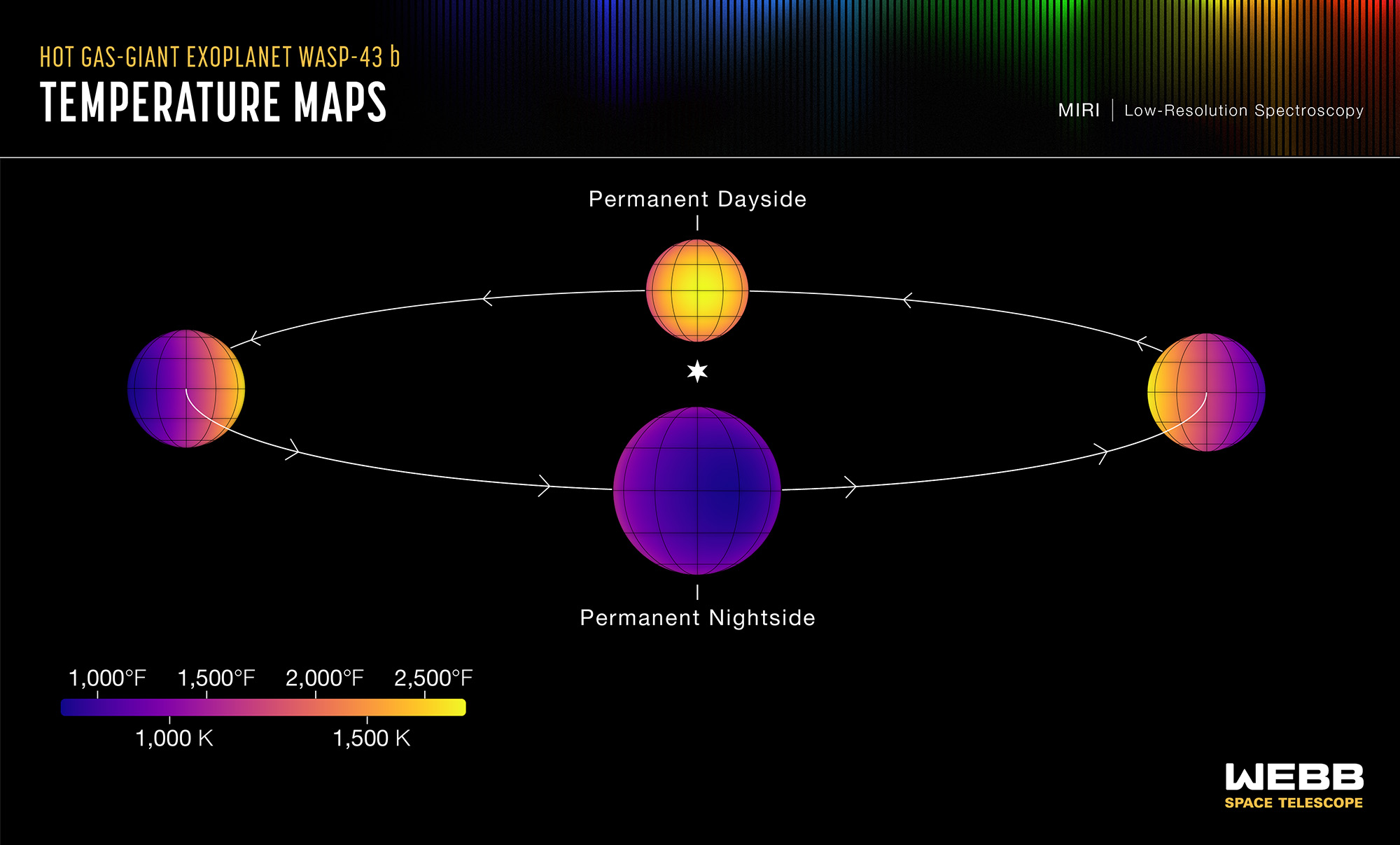
The team’s research showed that the dayside has an average temperature of nearly 2,300 degrees Fahrenheit (1,250°C), which is hot enough to forge iron. Meanwhile, the nightside is significantly cooler at 1,100 degrees Fahrenheit (600°C). The data also help locate the hottest spot on the planet (the “hotspot”), which is shifted slightly eastward from the point that receives the most stellar radiation, where the star is highest in the planet’s sky. This shift occurs because of supersonic winds, which move heated air eastward.
To interpret the map, the team used complex 3D atmospheric models like those used to understand weather and climate on Earth. The analysis shows that the nightside is probably covered in a thick, high layer of clouds that prevent some of the infrared light from escaping to space. As a result, the nightside, while very hot, looks dimmer and cooler than it would if there were no clouds.
JWST’s instruments make it possible to measure the amount of water vapor and methane around WASP-43 b. The spectra taken by the researchers show clear signs of water vapor on the nightside as well as the dayside of the planet, providing additional information about how thick the clouds are and how high they extend in the atmosphere. Surprisingly, the data also show a distinct lack of methane anywhere in the atmosphere. Although the dayside is too hot for methane to exist, methane should be stable and detectable on the cooler nightside.
The researchers think this can be explained by high-speed winds, reaching up to 5,000-miles-per-hour, which move gas from the planet’s dayside to its nightside so quickly that there isn’t time for methane to be produced.
The team thinks that because of this wind-driven mixing, the atmospheric chemistry is the same all the way around the planet, which wasn’t apparent from past work with Hubble and Spitzer.
Piette has been involved in two other teams that used JWST to temperature map exoplanets—the hot Jupiter WASP-18 b and the steamy Gliese 1214 b—in order to better understand the dynamic processes that contribute to their atmospheres.
“Through its ability to detect atmospheric gases and measure temperature variations, JWST is enabling an enhanced understanding of what’s happening on distant worlds and informing our plans for how to best search for evidence of life elsewhere,” Gao concluded.
This work was undertaken as part of JWST’s Early Release Science programs, which are providing researchers with a vast set of robust, open-access data for studying a wide array of cosmic phenomena. Piette, Gao, and other Carnegie astronomers have played important roles in several Early Release Science team breakthroughs using the space telescope’s powerful capabilities.
Carnegie Science astronomers continue to showcase their creativity and propensity for bold research ideas using JWST. Three Carnegie-led teams were selected for the space telescope’s third cycle of time allocations, adding to the 10 initiatives headed up by Carnegie-affiliated researchers in the first two rounds.
